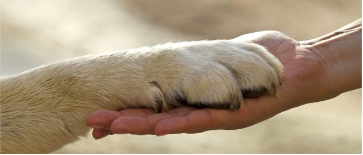Often when it comes to making an end of life decisions, some people struggle with knowing when the time is right. And that’s okay, it’s never an easy decision to make even if you’ve been through the process before. That’s why we are here to answer your questions, talk through options and discuss how the process happens. Sometimes it’s not an easy conversation to have, but it’s an important one.

The most common thing I hear from owners when their pet is given a terminal diagnosis is “I don’t want to euthanize them. I want to let nature to take its course and for them to pass at home.” Sometimes, in lucky situations, this happens. Pets will go to bed one night and pass peacefully in their sleep. In the majority of cases, this doesn’t happen as nicely. Yes, the pet may move in their sleep eventually, but until they get to that point, they can spend their last days or weeks being very painful and depressed. In most of these cases, it is too complicated for owners to decide to euthanize. And as I said before, it’s okay that you don’t find this decision easy. Pets hold pieces of our hearts and are a large part of our family. Being the one to decide when it’s time to let them go is hard. But after all the joy and happiness that they have brought us during their lifetime, making them pass without suffering is the best gift we can offer them.
Many terminal illnesses in the end stages can become very painful. Even if the disease itself is not painful, the side effects caused by the disease can be what causes the discomfort. When dealing with these kinds of cases, we always try to make sure that your pet is comfortable and pain-free. However, the disease may progress to a point where we are no longer able to manage the pain adequately. When that point arises, and the pet is experiencing more bad days than good days, it is time to look at the end of life arrangements.
Many times, owners struggle with knowing when the time is right. I like to tell people to start tracking how many good days your pet is having versus how many sick days they are having. When the bad days begin to outnumber the good days, then their quality of life is decreasing. This leads to the question, “What is a bad day?”. Bad days are different for each pet. If your dog loves to chase the ball or frisbee every day and they start to have days where they no longer have the energy or are too painful to play, this would be considered a bad day. If your cat comes upstairs every morning to wake you up for breakfast, but this becomes too much for them to do and they would rather stay lying downstairs, this would be considered as a bad day. When your food motivated lab stops wanting to eat, this could be viewed as a bad day. Anything that is out of the ordinary for your pet could be considered a sad day when dealing with a terminal illness or old age.
Recently, I attended a conference and listened to a fantastic speaker. She spoke about her personal experience with a terminal illness in her cat. When they were first given a diagnosis, she and her husband sat down and came up with three endpoints. When her cat reached one of these endpoints then she knew that her quality of life would have decreased to the point that she would soon be suffering. Endpoints can be anything; when they stop playing, stop eating, stop coming to greet you at the door, no longer want to go for walks, etc. For this woman, one of her endpoints was when her extremely food motivated cat stopped eating. The day that she got up and her cat didn’t want to eat her breakfast, she knew that it was time. Endpoints are an excellent way to help you make decisions in regards to your own pet’s quality of life. Talk with your family, and with your veterinary team to determine what endpoints might suit your pet best.
Another alternative to endpoints is a Top 10 list. Take a few minutes and make a list of 10 things that your pet loves to do. Again, these lists will change from pet to pet. Stuff on your pet’s list may include: playing with their favourite toy, going for long walks, playing with their other furry friends, or sleeping on the couch or bed with you. Make notes as to how well your pet can do the things on their list. If they are no longer able to do these things or they are no longer able to do them without experiencing pain, then it may be getting close to their time. You should also try to keep in mind how well they can do the things on their list. Yes, they are still able to walk around the block but does every step cause them pain? It’s important to remember that eating and drinking are also things that should make it on your list. Eating and drinking might not be considered favourite things, but they are fundamental to your pet’s quality of life. Starving is not an excellent way to pass away, so keep an eye on your pet’s eating habits.
Remember, we are here for you and your pet. We will do our very best to make your pet’s end of life process as pain-free and peaceful as possible. If you can, stay with your pet and talk to them during the procedure. If you find it too challenging to be present, know that we will hold them and give them as much love and comfort as possible on your behalf. If you are struggling with this decision or want to know more, let us help you by talking through your concerns.
Lastly, your pet’s life was so full of joy and happiness so try to make their last day one of their best days. If it’s nice out, go for a slow walk in the park or at the beach. Lay with your cat in a sunbeam and have a nap. Have a picnic with cheeseburgers or tuna or chocolate or whatever food your pet has always wanted but was never allowed. Try to make it a celebration of life take pictures, laugh, cry, enjoy their company, talk about your favourite memories and make more minds.




